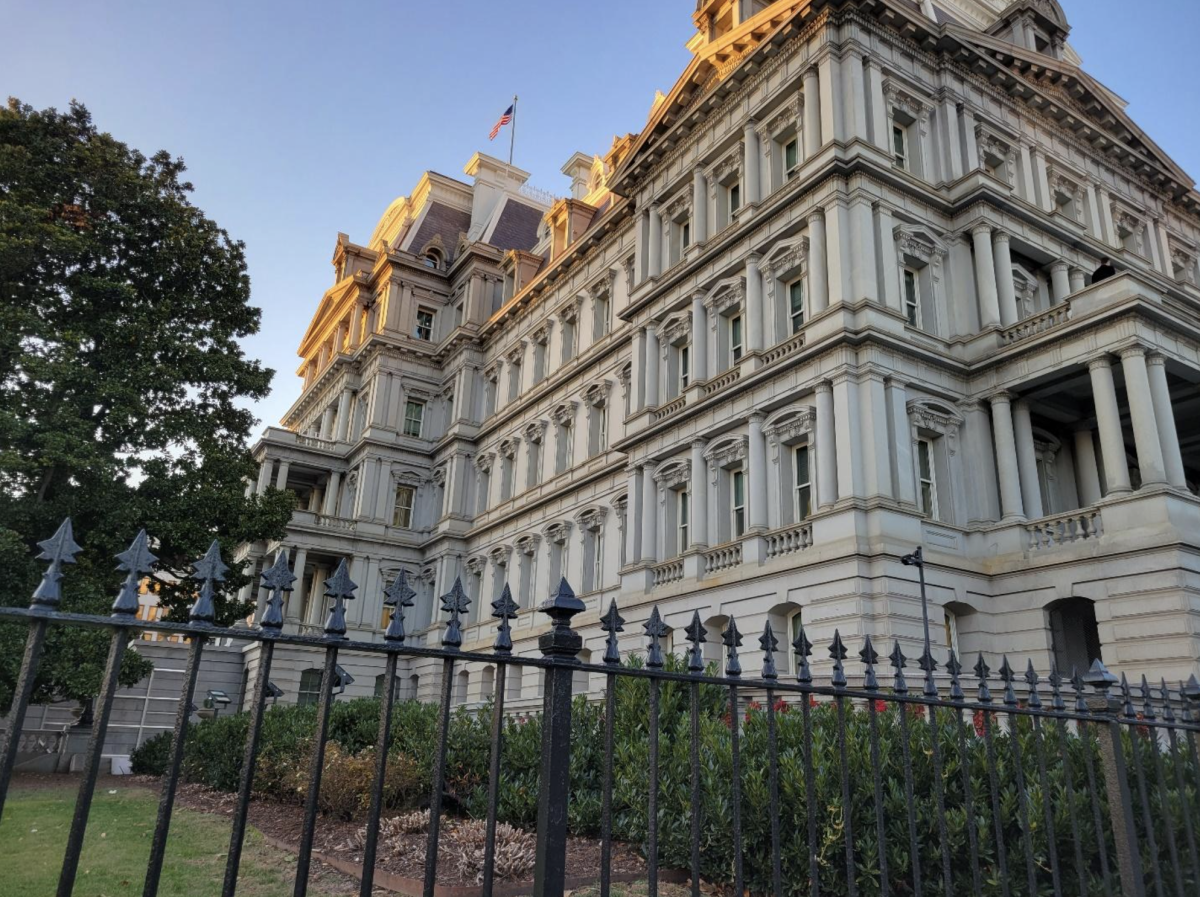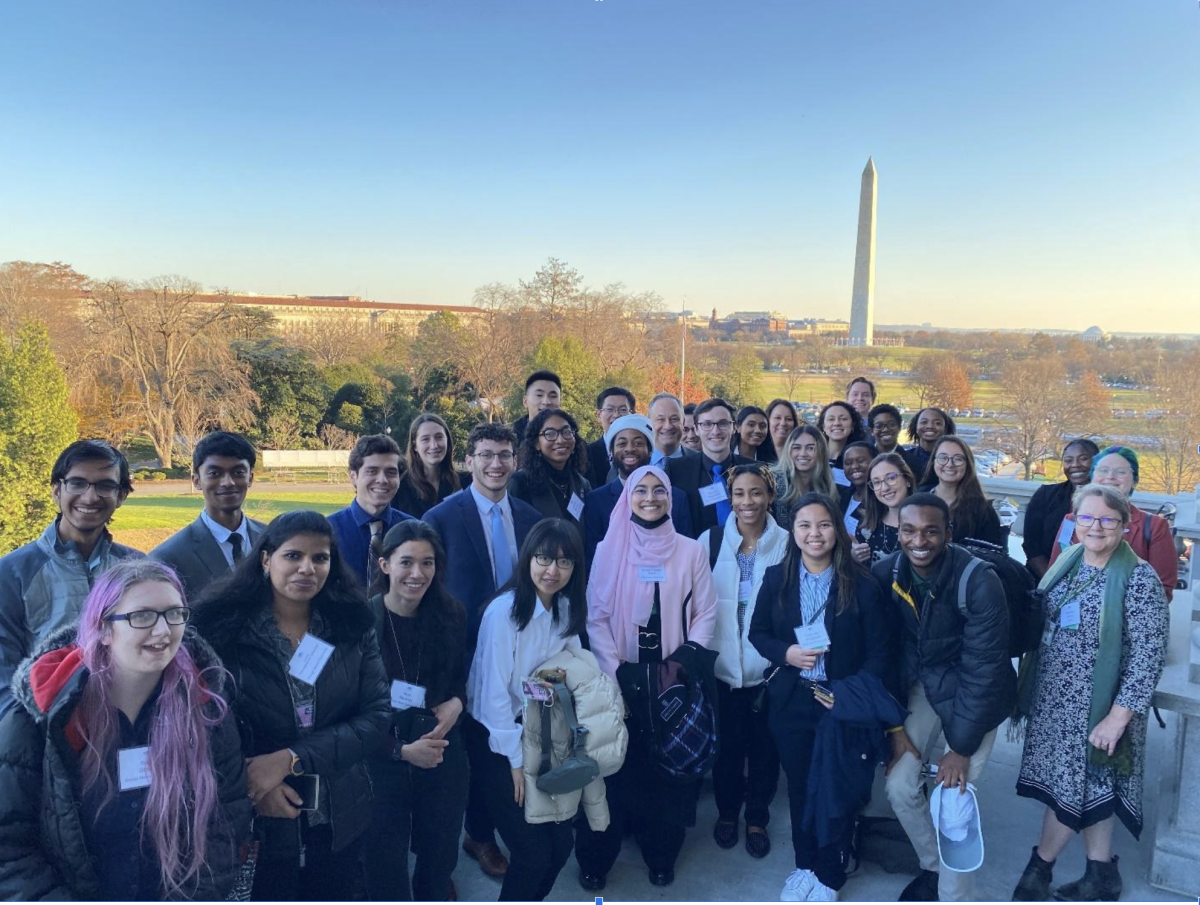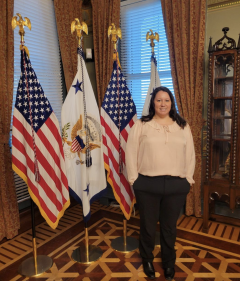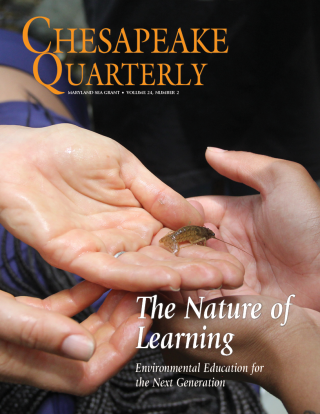Knauss legislative fellowships in Congress help build careers — and they're fun and educational. See our video and fact sheet for details.
The Maryland Sea Grant Bookstore will be closed for the winter holidays from Monday, December 15th to Friday, January 2nd and will not be taking orders during that time.
Breaking Barriers and Building Bridges: A White House Roundtable on Data Science and the Climate Crisis
I was excited for the new opportunities my State Science Policy Fellowship would bring, but nothing could have prepared me for the email I received from the White House in November. I knew my fellowship would provide opportunities for professional development and networking, in addition to learning about Maryland’s ambitious climate change laws and how science can support solutions. But when the National Space Council invited me to the White House, I thought the email was spam at first.
I was asked to participate in a roundtable with students, postdoctoral fellows, and various government agency folks who use computational skills to create models, analyze data, and develop innovative technology to combat the climate crisis. Attendees included scientists and project managers from many federal agencies, including the Office of Science and Technology, the National Oceanic and Atmospheric Administration, the United States Geological Survey, and the National Aeronautics and Space Administration.
I had seen the Eisenhower Executive Office Building (the palatial gray structure next to the White House) before during sight-seeing trips around Washington, D.C. It is massive and imposing, even in this city of large, prominent places. This is where the roundtable took place, and even though I had submitted my information for the background check weeks earlier, standing in line at the security checkpoint was intimidating. We gathered in the Diplomatic Reception Room, and given another opportunity, I could spend hours poring over the architecture, art, and decor of this room. During the discussion, Chirag Parikh, deputy assistant to the president and executive secretary of the National Space Council, looked at me and three others and said he had spoken with four U.S. astronauts in these same chairs just last week. Eight-year-old me, the little girl who constantly debated whether to be an ocean or space explorer, would be beside herself.

The discussion was intriguing. First, everyone in the room introduced themselves and their research. Students from all over the country shared amazing projects, from collecting data via drones to creating apps that share knowledge with the public. My PhD research fit into the data discussion about how to quantify biodiversity changes in response to climate change. My current role as State Science Policy Fellow allowed me to consider the relationship between all these projects and how they can enhance decision-making.
Questions posed to all, like, “How do we use space to inspire the next generation of the STEM workforce?” and “How do we make data useful and actionable to real people?” started the dialogue, and soon the conversation was casual and open. Near the end of the roundtable, our host, Quincy Brown, allowed students to ask career-related questions. Most questions focused on how to navigate the USA Jobs website and the best way to get a “foot in the door.”
Afterward, we took a mini tour of the building. In the hallway, we ran into Second Gentleman Doug Emhoff, who was kind enough to pose with us for a picture and allowed us to take photos from his office balcony. Once we made our way to the Vice President’s Ceremonial Office, we had the privilege of seeing several historical pieces, including the desk cabinet where the infamous Watergate tapes were recorded. The desk was commissioned for President Theodore Roosevelt. Since the 1940s, the inside of the top drawer has been signed by each vice president upon leaving office. When Vice President Harris signs it upon her departure from the office, she will be the first woman to leave her signature.

As we left the Eisenhower Executive Office Building, we were gifted a box of chocolate Hershey’s kisses adorned with the Seal of the President of the United States and featuring President Joe Biden’s signature. We took a couple more group pictures on the staircase facing the West Wing before our time was up in the White House complex. I overheard some undergraduate attendees saying things like, “What did I do to end up here?” They were awe-inspired by the history of the building and their proximity to high-level decision makers. I hope they all realize they were invited because they are doing amazing things.
The group included students and fellows from a wide range of stages in their academic careers and representing diverse backgrounds. But the conversation did not focus on diversity, equity, and inclusion. Instead, it focused on using data to combat the climate crisis. It was an example of DEI in action: Not only did they offer everyone a “seat at the table,” but they let everyone speak.
Top image: Kayle Krieg poses by the flags in the Vice President’s ceremonial office.
See all posts to the Fellowship Experiences blog



